Encouraging the Church in world mission









In 1876, four young men from the Xhosa tribe in South Africa volunteered to go out as missionaries to the Ngoni people in present-day Malawi.
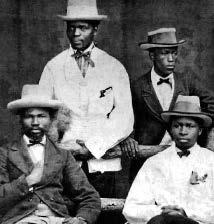
Ramatoa Razarinia was sent as a missionary to the southeast coast of Madagascar in 1890. Her path was lined with women who moved mountains with her and for her.


Philip the evangelist was sent into the desert to open the scriptures to a court official from Ethiopia 2,000 years ago. Today, the Holy Spirit is sending Ethiopians into the desert to open the Scriptures to others.
10 GO! News of Africa’s Mobilising Church
12 People Groups: IMAZIGHEN
© 2019 AFRIGOAFRIGO is a publication aimed at raising awareness, mobilising, training and inspiring churches and individuals in Africa towards global mission.
Editor: Mercy Kambura Mate Design: Pilgrim Communications
The views expressed in the various features in this magazine are not necessarily those of the publisher.
Stock photos are occasionally used. Pseudonyms are used when there are security concerns.
What can be written about 2,000 years of Africans in missions in a 12-page magazine?
“Now faith is the substance of things hoped for, the evidence of things not seen. For by it the elders obtained a good testimony … And what more shall I say? For time will fail me to tell of Gideon and Barak and Samson and Jephthah, and also of David and Samuel and the prophets (and the other Africans in missions).” Hebrews 11:1,2,32
The history of Africans in missions dates back to the first century when the civil servant (Finance Minister) from Ethiopia, described as a man of great authority under Candace, the Queen of Ethiopia, visited Jerusalem on pilgrimage. On his return trip, he was converted and baptised through the ministry of Philip the Evangelist. The Bible clearly states that the Ethiopian went on his way rejoicing! – a great hallmark of the evangelistic ministry.
How many more African witnesses have been raised across the continent since then? Names such as Ajayi Crowther (Nigeria), Nicholas Bhengu (South Africa), TB Dankwa (Ghana), John Apollo Kivebulaya (Uganda), Rev.
Panya Baba (Nigeria), Pius Wakatama (Zimbabwe), Tokunbo Adeyemo (Nigeria) and Geoffrey Osei Mensah (Ghana) come to mind.

These men, through faith, in the modern equivalent of Hebrews 11, “subdued kingdoms, worked righteousness, obtained promises, stopped the mouths of lions, quenched the violence of fire, escaped the edge of the sword, out of weakness were made strong, became valiant in battle, turned
the Redeemed Christian Church of God (RCCG), a Nigerian church now in 198 countries as of August 2018!
In this edition, you will read the story of Ethiopia’s engagement in sending missionaries over the last 100 years.
to flight the armies of the aliens.” We have them to thank for the HUGE role Africans now play in missionary endeavours throughout the world. Often the important roles of their wives were never mentioned.
A number of global mission agencies are now led by Africans. In many cases, they are the first Africans to lead their respective organisations. Indigenous African churches have planted churches across the globe, including
Join us in celebrating the life and work of veteran and pioneer missionary Rev. Panya Baba, a former Director of the Evangelical Missionary Society (EMS) of Nigeria. Rev. Baba service to African missionary sending is a reference point for many with respect to the involvement of Africans in missions. The article on Perspectives captures the story of a Malagasy woman 130 years go, who founded schools and reached pupils in Madagascar with the gospel. The missions engagement of the Tangale people in north eastern Nigeria begins a century ago with evangelists who entered Muslim emirates that no foreigner could go. You will also read of four young Xhosa men who travelled north to Malawi as pioneers among the Ngoni.
It is my prayer that this unique edition of AfriGO will provide an opportunity for you to engage with different countries in Africa and mobilise prayer for the continent of Africa. God bless.
The history of Africans in missions dates back to the first century.
Stephen Nitte looks completely at home amidst the laboratory equipment at Partners in Hope Medical Centre in Malawi, southern Africa. His most natural expression is a big smile. A missionary from Nigeria, his qualifications in medical laboratory science have equipped him for this vocation, but his conviction that those living and dying without Christ is compelling him to take his skills across borders.

At first glance, Stephen, a Tangale from north eastern Nigeria, may seem like a trailblazer, forging a new path from his home town of Tal in Gombe State, to become a cross-cultural missionary. But Stephen’s story is simply the most recent chapter in a story of Tangale missions that dates back, not 20 or 30 years, but a full century, to the time when the gospel first arrived.
The first Tangale to place his faith in Jesus was a man named Karga, an orphan who snuck into the mission compound, and would soon teach the missionaries his language. Karga gave his life to Christ in 1919 and was baptised the following year. He was the first to enrol and graduate from literacy classes, and to become a teacher.
Missionary Harry Harling describes Karga’s devotion: “Faithfully and conscientiously, he continued his daily tramps to Billiri suffering the full heat of the Sun at mid-day, unperturbed at exposing his bare feet to bite of deadly snakes lurking along the pathway as he trod his way home after dark…. Soon quite a group was sitting at his feet, learning to read and hearing the wonderful new things from God’s word.”
The small churches that began to emerge in Tangale land in the 1920s were missions-minded from the start.
Reuben Goje Maiture, a historian and lecturer in Christian Religious Studies at Ahmadu Bello University in Zaria, Nigeria, writes, “SIM taught the converts the biblical principles that every ‘convert
is a witness.’ Realizing this, the converts became quintessential evangelists and within a short time transformed Tangale society. All graduates of the literacy classes eventually were commissioned to be teachers and evangelists.”
Western missionaries’ call for evangelists resulted in new missionaries stepping forward to open areas in northern Nigeria. Locations among the Muslim emirates were often too hostile for foreigners to enter, let alone set up dispensaries or schools. Yet the Tangale entered easily, like “lizards in a king’s palace” (Proverbs 30:28).
Missionary Gordon Beacham recorded in 1940 that “besides a staff of one hundred self-supporting native workers,” the Tangale church “have sent twenty ‘foreign missionaries’ to Muslim and pagan tribes in other parts of the country.”
Professor Maiture writes that “the statistics of the Tangale evangelists grew so rapidly that it could be equated
to, and be even greater than, the staff strength of some foreign missions working in Nigeria by then.”
The African Mission Society, now known as the Evangelical Missions Society (EMS), was founded in 1948 and has one of the largest workforces of any African mission agency today. In 1963, more than a third of the EMS missionaries were Tangale.
Today the Tangale are still ‘going north’ through Stephen, who is back home and preparing for his next assignment: Galmi Hospital, Niger Republic. The communities around Galmi are predominately Hausa and Fulani Muslims, just like the communities the Tangale entered a century ago in Gombe, Borno, Kano and Sokoto.
Is Stephen forging a new path or simply following in an old one? Both. Each generation and person forges a new path in obedience to the One who calls them out for a certain purpose. Yet the path is not entirely new either.
Stephen’s story begins with Karga, the first Tangale convert and missionary. It continues with the gospel arriving in his hometown of Tal in 1932, when two men named Sambo Bukbuk and Alkali Tal arrived as evangelists from neighbouring Billiri. The story continues with godly Christian grandparents and parents who raised up Stephen. Today Stephen is continuing the story.
• SIM and the Tangale Factor in the Christianization of the Hausa of Northern Nigeria, 1915-1976. Rev. Dr. Reuben Goje Maiture. Published in “Transforming Africa’s Religious Landscapes” Africa World Press, 2018.
• “The Story of Billiri” The Sudan Witness, Jan-Feb 1938, Harry Harling
• A Grain of Mustard Seed, The Sudan Witness, Nov-Dec 1940, Charles Gordon Beacham.
Leave darkness! Come to the light!
Pum’ebumnyameni! Yiza ekukhanyeni!
Take up the shield and trust in faith!
Qubula ikhaka umise ngo kholo!
Aim forward and go to the cross!
Funzela pambili uy’emnqamlezweni!
And leave the sunny shades of sins. Ushiy’imithunz’enelanga yezono. – Isaac Wauchope, who hoped to reach the lost in Malawi but was prevented by sickness en route.
In 1876, four young men from the Xhosa tribe in South Africa volunteered to go out as missionaries to the Ngoni in present-day Malawi. Chosen from among 20 candidates studying at Lovedale Missionary Institute, they travelled north with high hopes and a desire to share the gospel with those who had not heard.

Shadrach Mngunana, the most academically astute, went as a teacher but died of fever within nine months. Isaac Williams Wauchope suffered from fever en route and had to turn back. Mapassa Ntintili, a wagon-maker, stayed almost four years at Cape Maclear and Blantyre before returning to South Africa where he became a teacher and evangelist. William Koyi, the best remembered of the group, served in Malawi for 10 years and left a mark that is still commemorated today.
The Ngoni tribe had migrated from Zulu country north into Malawi and settled on the western side of what is now Lake Malawi. They were formidable warriors and regularly attacked their neighbours. The missionaries of the Livingstonia Mission, among them Koyi, wanted to reach them with the gospel of peace and salvation, but to approach the chief of such a fierce people was no easy matter.
Through some introductions, an audience was finally granted. Koyi had a remarkable advantage over his European colleagues: he could readily understand the Ngoni language, which is part of the same linguistic group as Xhosa. The chief came to accept him because of this ability and his sensitivity to their customs. Koyi was the first to speak the name of Jesus to this people.
Once when an Ngoni war party headed out to plunder villages and the mission station, where they expected to find stores of supplies, Koyi volunteered to go out to meet them, at tremendous personal risk. Not only did he convince them to turn back, but to lead him to their chief, in order to preach the gospel. He eventually settled among them for periods of time, and became a pioneer missionary among the Ngoni, which opened up opportunities for other missionaries.
Dr Walter Elmslie, another missionary, wrote: “the judgment and caution of Mr. Koyi were invaluable.” Those first years among the Ngoni were fraught with danger, and raiding and slaughter continued around the missionaries who strove to share the Good News with a people who were slow to accept it. However, the influence of Koyi’s humble Christian life, and resilience in the face of danger and difficulty, won the respect and love of the Ngoni.
Eventually, Koyi contracted tuberculosis but before he died, Dr Elmslie visited him to tell him the chief had granted complete permission to teach and preach the gospel among the Ngoni. Koyi responded with the words of Simeon from Luke 2:29-32: “Sovereign Lord, as you have promised,
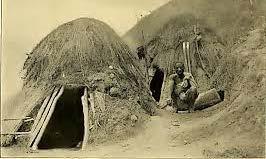
you may now dismiss your servant in peace. For my eyes have seen your salvation, which you have prepared in the sight of all nations.”
Recruited as a young student and eagerly evangelising at every opportunity, Koyi was known as God’s humble worker, a man of great courage and faithfulness. He died and was buried among the Ngoni, and is honoured today for the sacrifices he made to bring them the Light of Life.
• Interview with Rev. Siegfried Ngubane, Director of SIM’s Southern Africa Region.
• In Memory of William Koyi https://bit.ly/2TsjK0y
• Xhosa Missionaries to Malawi: Black Europeans or African Christians? by T. Jack Thompson. International Bulletin of Missionary Research, Oct 2000, pp168-170.
Ramatoa Razarinia was one of the first Malagasy women to be sent as a missionary to the southeast coast of Madagascar. Born in 1867, she would go on to forge a path lined with women who moved mountains with her and for her. Like the Apostle Paul in Romans 16, who sends greetings to women who have worked hard in the Lord, so Razarinia’s life was full of such women.
Three queens of the Kingdom of Madagascar were placed in power at the right time, paving the way for missions work.
Queen Rasoherina ruled from 1863 to 1868. Her husband, King Radama, reinstated freedom of worship and the opening of schools. After his death, the queen pursued and expanded the scope of his actions. This opened doors for the growth in education that would mark missions in general and Razarinia’s calling in particular.
The next queen, Ranavalona II, made Christianity the faith of the royal court, further paving the way for Christian influence on the island during her 15-year reign.
It was her successor, Queen Ranvalona III, who hosted a farewell ceremony for Razarinia in the royal chapel at the time of Razarinia’s commissioning as a missionary in 1890.
Like Eunice, the mother of Timothy, Razarinia’s mother played a huge role in her conversion and missionary calling. Having established the church school in their hometown, she took Razarinia with her to school every day.
Accompanying her mother helped her adapt to the rhythm of school life. Aged seven, she entered the Girls High School managed by the Friends Foreign Mission Society in Faravohitra. After finishing her studies, she stayed as a teacher for seven years.
Her village was still unreached with the gospel and this saddened her, as did social ills like violence and alcoholism. Razarinia’s missionary calling was confirmed when a woman from the International Blue Cross arrived in Antananarivo with an agenda to fight alcoholism.
In addition to the women in her formative years, Ramatoa was influenced by women friends throughout her life. One was Razafinimanana. After two years of thorough preparation, they were sent together to the south east coast of Madagascar in 1890. They served at the busy Ambahy mission station where there were three priorities: education, medical work and evangelisation.
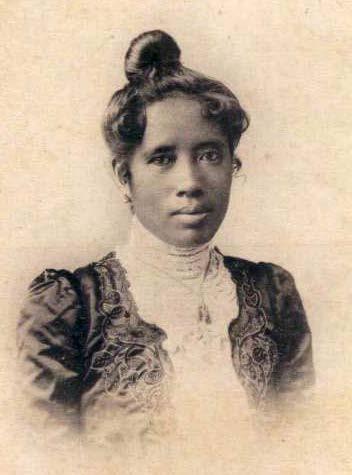
Razarinia married the governor of nearby Farafangana, Rajonah, and they had a son, Gabriel. However, Rajonah was killed in 1895 during the Franco-Malagasy war.
Razarinia and her fellow missionaries eventually left the region in the care of the Norwegian Lutheran Mission and moved to the Betsileo high country. Always passionate about the welfare of young girls, she taught biblical studies and practical living skills in a teacher training college.
In Ambohimahasoa, Betsileo, she helped establish a girl’s school and stayed on to teach here for 23 years. She also taught girls employed as domestic help who had no other means of education.
Razarinia eventually left her adopted home in the Betsileo and returned to Antananarivo in December 1926. But the work was not yet done, and she found herself accepting more invitations to teach.
Razarinia remained active in church and missions even into retirement. On Christmas day 1946, Razarinia Ramatoa joined her Saviour in glory.
Further reading: https://dacb.org/ stories/madagascar/razarinia/
There were three priorities: education, medical work and evangelisation.Queen Ranavalona III of Madagascar who reigned from 1883 to 1897. Photo by J. Geiser Algier
Panya Bado Baba has been described as one of the fathers of modern African missions and the “greatest missiologist of the ECWA” (Evangelical Church Winning All) denomination.
Today, 70 years after his first missionary assignment, he continues to write, preach, lecture and provide counsel in his local church in Karu, Nigeria.
He was born in 1932 to Christian parents. He gave his life to Christ at the age of 13. Four years later, he set out for a neighbouring state to be a missionary among his own people. As he taught the Bible, his missions zeal grew. He was ordained and served in a local church, but his heart was always for those beyond the gospel.
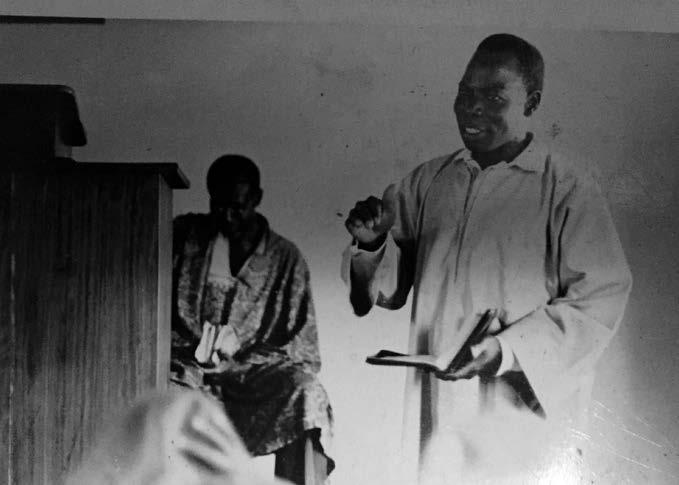
From 1970 to 1988, he led Nigeria’s first indigenous mission organisation, the EMS. During his time, the number of missionaries increased from 194 to 750. Today, the EMS workforce is about 1800, working in 18 countries, and is led by Simon Yako, one of the first Nigerian missionaries to be commissioned by Panya Baba to serve overseas. Baba’s book, Vision Received, Vision Passed On, tells the history of the EMS.
AfriGO spoke to Professor Yusufu Turaki, a lecturer at Jos Evangelical Theology Seminary (JETS) in Nigeria, and a personal friend of Panya Baba’s, to learn more.
The Dictionary of African Christian Biography references Panya Baba’s “ingenious mission strategy.” What was it?
Reaching the unreached. This led him to research unreached people groups in Nigeria. His leadership raised missionary and evangelistic activities tremendously in Nigeria.

Above all, he raised mission awareness among Nigerian churches and denominations generally, and missions agencies across Africa.
Secondly, he was instrumental in forming the Nigeria Evangelical Missions Association (NEMA) and its Nigeria
Evangelical Missions Institute (NEMI).
Thirdly, he called for missions and evangelism at international conferences, including the Association of Evangelicals in Africa (AEA), Lausanne Movement, World Evangelical Alliance (WEA) and more.
Lastly, his voice was louder than the modern voices of religious pluralism and cultural relativism.
What were the obstacles he faced in leading EMS?
Panya Baba was the second person to head EMS after Rev. Musa Jibo. His greatest challenges were:
1. Churches and denominations in Nigeria lacked mission philosophy and strategy, so mobilisation for mission work was difficult. Passion for missions and evangelism was low.
2. Lack of trained missionaries from the theological institutions, which is why the Nigeria Evangelical Missions Institute (NEMI) was established in the early 1980s.
3. Lack of resources – material and financial – in view of “the harvest is plentiful, but the labourers are few.”
4. The challenge from some liberal Christians, churches and denominations due to apathy towards missions and evangelism.
5. The rise and power of Islam and African traditional religion and worldviews in Africa after independence in the 1960s.
How did his formative years prepare him for his life calling?
Panya Baba comes from a Gbagyi royal family, so learned the art of leadership at a tender age. This developed his qualities as a mobiliser, counsellor, visionary and encourager.
He was greatly influenced by SIM missionaries early in his Christian life. Institutions such as Karu Bible Training School, Kagoro Bible College, All Nations College in England and Fuller Theological Seminary were instrumental.
He has a high level of motivation, curiosity and doggedness, never giving up until the task is accomplished.
For the young adult reading AfriGO, what has Panya Baba modelled that they must emulate?
Faith, commitment, loyalty, humaneness, simplicity, and humility. His life teaches us all to be eager to learn. He has a strong, consuming and unwavering passion and love for Christ, his Kingdom, missions and evangelism.
For further reading, visit www.nemanigeriamissions.org
The Gospel first arrived in Ethiopia nearly 2,000 years ago. The Holy Spirit sent Philip into the desert to explain the scriptures to an Ethiopian official in the court of Queen Candace (Acts 8). Today, the Holy Spirit is sending Ethiopians out into the desert to open the Scriptures to others.
AnemergingfocusamongsomemissionleadersinEthiopia is the nomadic Fulani people of West Africa, who live on the rim of the Sahara Desert. Their population, estimated at 40 million in 20 countries, is largely Muslim, and many practice indigenous religion too. Side-by-side, the Fulani and Ethiopians look like siblings, and legend says the Fulani originated from Ethiopia. In one of the Hadith, Muhammed forbade his followers from harming Ethiopians, making them natural friends today.
The East Africa Office (EAO), led by Worku Hailemariam, hosted a two-day conference in Addis Ababa in June 2019, drawing attendees from various churches and denominations. Among the attendees was Tambaya Ibrahim, a Fulani church leader from Niger. He directs a Fulani Bible school and serves on a scripture translation team. (Famines in 1974 and 1984 sent peoplefromhiscommunityinthedesertsouthinsearchoffood, where they encountered the gospel.) Tambaya and Rev. Gashaw, Ethiopian missionary to Mali, gave an altar call, and eight responded, committing themselves to help reach the Fulani.

Ethiopian evangelicals have a long history of sending missionaries cross-culturally within Ethiopia. The two largest denominations are the Kale Heywet Church, founded nearly 100 years ago, and the Mekane Yesus, which is even older.
Together and by themselves, the Ethiopian Kale Heywet Church Global Mission, Evangelical Church Mekane Yesus mission agency, called International Mission Society, and the EAO have sent out over 60 missionaries outside Ethiopia, all supported by their home churches. The EAO is now also

sending Kenyans, Eritreans, Tanzanians and Ugandans through its office. Five families of the EKHC, sent through EAO, now serve among the Fulani in Ghana, Niger, Mali, and Guinea, with more arriving in Nigeria in the future.
Prayer has been central to missions history in Ethiopia Desta Langena, director of the Ambaricho International Prayer and Missions Movement (AIPM) tells this story. The communist government, which took over the country’s political system in 1974, sent lecturers and students out into communities to eradicate illiteracy and introduce communist
ideology. One day, they went to the house of a witchdoctor named AbaSarecho on Ambaricho mountain, and removed all of the satanic worship items, warning him not to continue his rituals. This was the beginning of the end for idolatrous worship by the Kambatta people on Ambaricho mountain, and evidence that God can use anything – even communism – to break strongholds.
Despite intense persecution, the Kambatta Church grew and believers prayed, worshipped, and influenced society.
In 1990 revival broke out at Teza Kale Heywet Church. An evangelist Tesfaye Gebre spent 30 days fasting and praying for the manifestation of God’s glory. He gathered more than 25 praying Christians to join him. When the revival came, more than 25,000 people came to Christ and more than 30,000 received miraculous healing.
News spread, and many more began climbing Ambaricho mountain for intercessory prayer. People committed to evangelism and church planting. After years of prayer, the 22nd AbaSarecho witchdoctor accepted Christ as his personal Saviour.

In 2003 the newly-formed Ambaricho International Prayer and Missions Movement (AIPM) sent its first pioneer missionary. Today there are 346 missionaries sent by AIPM to work outside their own ethnic group. This has led to the salvation of more than 50,000 people and the planting of 750 churches all over Ethiopia.1
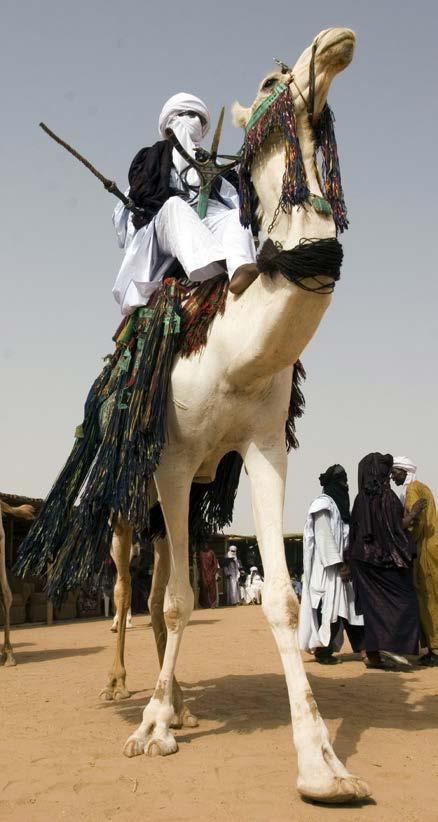
Six months after the EAO began in 2012, it helped to found the Ethiopian Global Mission Network, a network of close to 20 denominations, ministries and mission agencies. Their vision to is see Ethiopia become a strong missionary sending country.
Believers in Ethiopia are no strangers to persecution. The following is told by Jack Bryan in Christianity Today magazine: After Italy invaded Ethiopia in 1935, Western missionaries fled or were forced to leave. Among them were the first two missionaries from Sudan Interior Mission (now SIM), who had planted a church in Sidama, a southern region known for growing coffee. They were
attacked on the road and killed. After the Italian occupiers were expelled, SIM sent four more missionaries to Sidama; three were soon killed.
Mourning their losses, Sidama congregations swore an unconventional oath: ‘We must avenge their deaths by sending out our own missionaries.’”
Today, more than 1,000 Kale Heywet Church exist in Sidama and they are sending more than 250 missionaries cross-culturally.2
God does not waste the history of any person, people or nation. Even persecution, communism and martyrs can contribute, in the fullness of time (Gal 4:4), to fulfilling God’s loving purposes for a church and nation. Today, Ethiopian missionaries can be found in the Sahel and Sahara Desert regions, in restricted access nations across Asia, and in Europe and North America. They are writing a new chapter in the greatest story of all, the story that ends with people from every nation worshipping before the throne of God.
1. Reclaiming the Mountain by Desta Langena. AfriGO Vol 2, Iss 2. p8-9.
2. Is the World’s Next Missions Movement in Ethiopia? by Jack Bryan. Christianity Today, p5053. June 2017.
More than 100 delegates from 30 countries attended the Global Diaspora Conference at Liverpool Hope University in Liverpool, England. From 5-8 June 2019, they discussed the diaspora — those who are displaced from their homelands — focusing on those migrating to Europe from Africa, Latin America and Asia. A diverse mix of leaders from the Global South working in Europe mingled with those who have migrated there, many as refugees.
Conference organisers hope to compile a book based on the stories and findings from event. The book will shed light on the current state of Christianity in Europe and how the Global South is shaping faith and community there.
Present at the event was #HowWillTheyHear, a group of 12 mission agencies, coordinated by United World Mission, which partners with local churches and Christian migrant leaders to reach refugees in Europe. Do
you know someone God may be calling into refugee ministry? You can help mobilise missionaries! For more information, visit www.howwilltheyhear.net.
At least one million sub-Saharan Africans have moved to Europe since 2010, according to the Pew Research Center. https://pewrsr. ch/2KOvNUv
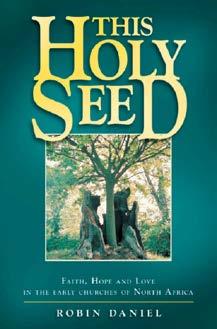
The Dictionary of African Christian Biography (DACB) is a free online database containing hundreds of biographies of African leaders, evangelists and lay workers. These men and women laid the foundation of Christianity on the continent and continue to build on it.

Available in English, French, Portuguese and Swahili, these stories inform and inspire us about those who have gone before but who may be forgotten. The stories date from just after the time of Jesus up to modern times.
Visit www.dacb.org to peruse this rich collection and learn how you can add stories. Doubtless there are inspirational Africans waiting for you to rediscover them.
The Movement for African National Initiatives (MANI) has released details of their once every five years event. It will take place in Abidjan, Cote d’Ivoire from March 8-12, 2021. Visit www.maniafrica.com/mani-events/.
“This Holy Seed” by Robin Daniel tells the story of the dawn of African Christianity. The Gospel arrived in North Africa among its earliest inhabitants, the Amazighen. Starting in Roman occupied areas, Christianity spread and was built up through three of the greatest Church fathers: Tertullian, Cyprian and Augustine. The courage and faith of these early African believers is a powerful testimony to us today.
Spanning the first to fifth centuries, the book traces Christian history from
the first cross-cultural missionaries to Athens — they were Libyans! — to the establishing of the church in North Africa, to the tremendous persecution and struggles of the church as Islam came flooding in. Although the book’s style is somewhat dated, the timeline is clear and easy to follow, and its many details keep the reader interested.
Find this book free at www.tarifit.info/ pdfbooks/thisholyseed.pdf.
Dr. Lamin Sanneh, scholar, author and renowned African historian, passed away January 6, 2019. Born into a Muslim context in the Gambia, he went on to teach at the Yale University in the US. He authored books such as “Whose Religion is Christianity?” and “Translating the Message.” His life’s work focused on the history of missions and Christianity in Africa. His advocacy for mission work and his contributions to Christian scholarship worldwide cannot be overestimated. www. dacb.org/stories/gambia/sanneh-lamin2/.
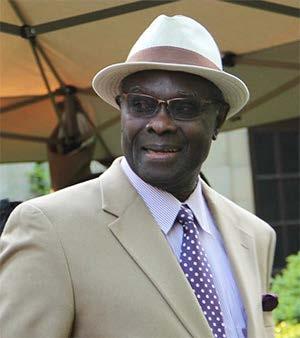
NUMBERS OF CHRISTIANS IN AFRICA
infographics produced by:
info@globalchrist ianit y org
www globalchrist ianit y org

@csgc
Af r ica is cr it ica l f or t h e f u t u r e of globa l C h r is t ia nit y r is it ica f or h e u r e of globa h r ia nit y
In t h e next 1 0 yea r s , Af r ica will likely gr ow t o h a ve t h e m os t
In h e next 1 yea s , Af ica ow o h t m
C h r is t ia ns of a ny cont inent : 7 0 0 m illion. h r ia ns of a ny cont inent : 7 m illion.
The Imazighen are the original people of North Africa. Their culture and civilisation have thrived for more than 4,000 years. In their language, Imazighen means ‘men who are free’. However, they are often called Berbers, a name given by Arab conquerors in the sixth and seventh centuries. Today, most of them are Muslim.
The Imazighen regard their Tamazight language to be of divine, even sacred, importance. There are many dialects. Neither the language nor their script are related to Arabic, but to the Chadic language family.
Their indigenous land, called Tamazgha, extends from the Canary Islands in the Atlantic Ocean across Morocco, Algeria, Tunisia, Libya, Western Sahara, Mauritania and parts of Egypt, Mali and Niger.
At a Glance
• They are the original people of North Africa, living there for 4,000 years.
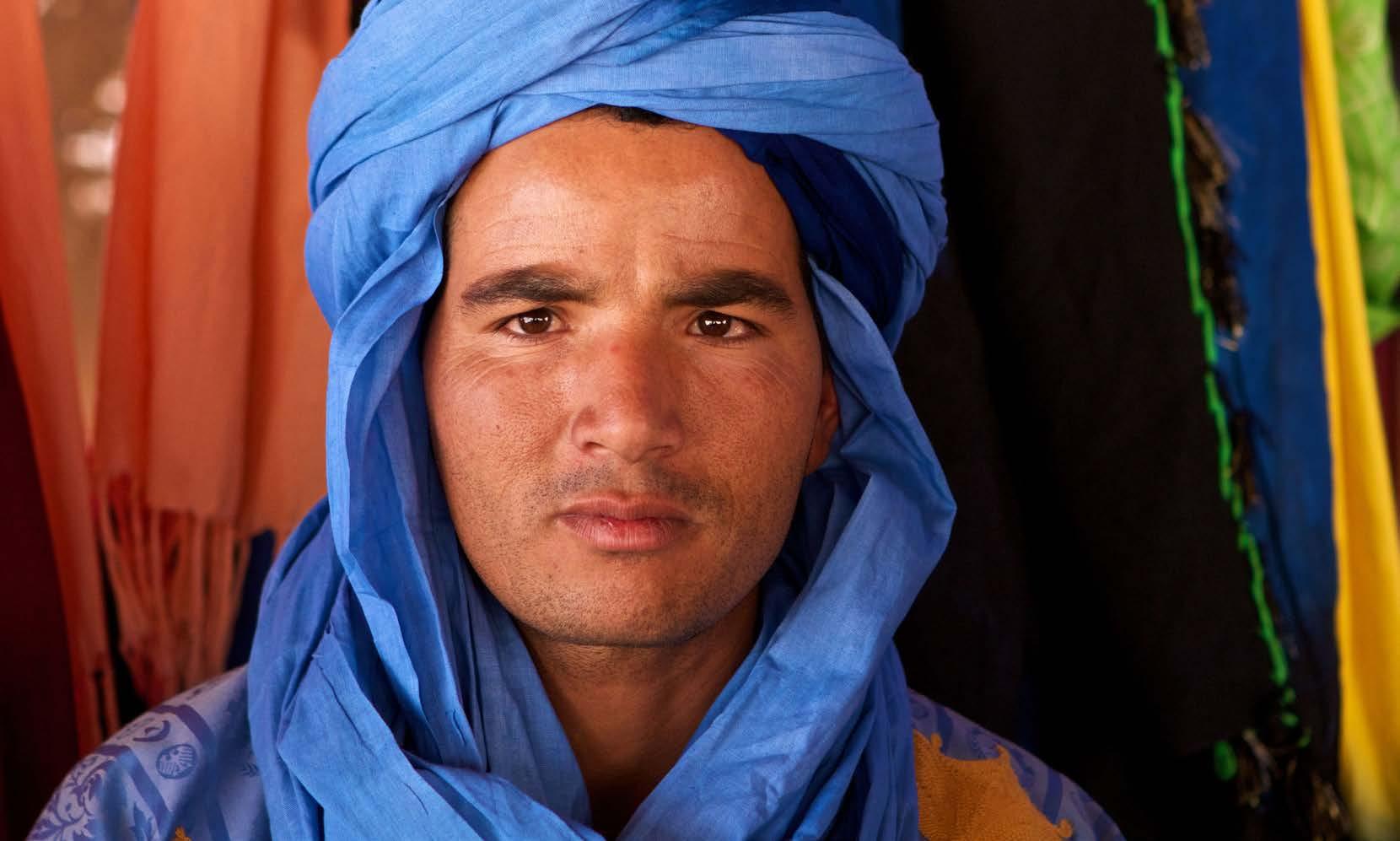
• Imazighen culture and language are becoming recognised alongside Arabic.
• Most Imazighen are Muslim.
• Their land once extended from the Atlantic Ocean to Egypt, and they are still found in every country in this region.
About 80 per cent of the people in Morocco and Algeria are of Imazighen descent; more than 60 per cent in Tunisia and Libya; and two per cent in Egypt. In total, there are around 40 million Imazighen.
Imazighen arts are mostly crafted by women and include jewellery, weaving, pottery and leatherwork. Their distinct Kabyle music features a variety of unique drums, stringed instruments and a type of bagpipe.
Though marginalised for a long time, they are beginning to be recognised. In Algeria, official government communications were distributed in Tamazight alongside Arabic for the first time in 2018. The government now also recognises the Amazigh New Year as a public holiday.
• That the truth of Jesus Christ will be revealed to the Imazighen.
• That their neighbours of Arab descent will also encounter Christ, that they will dwell together in unity as brothers. (Psalm 133:1)
• For churches in North Africa to reach more Imazighen with the gospel in relevant ways.
AFRIGO
SIM Southern Africa
P.O. Box 30027
Tokai, Cape Town 7966, South Africa
Tel: +27 21 7153200
za.enquiries@sim.org
SIM West Africa
P.O. Box 9962
Accra, Ghana
Tel: +233 30 222 5225
wamo.personnel@sim.org

SIM East Africa
P.O. Box 5966
Addis Ababa, Ethiopia
Tel: +251 911 206 530